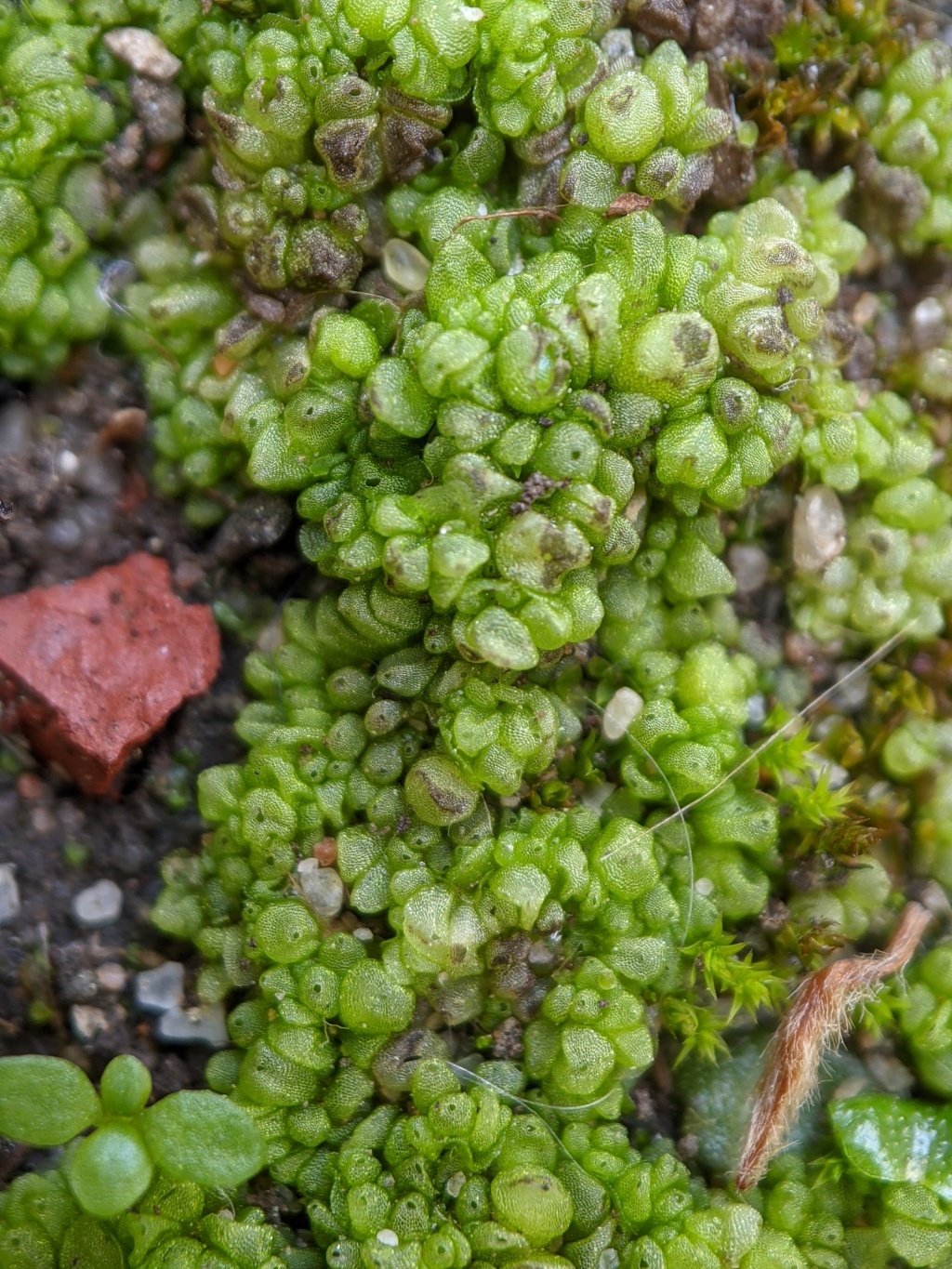Sphaerocarpaceae
Annual, terrestrial, dioicous, with female plants larger than or (not in Victoria) similar in size to male plants. Asexual reproduction rarely by black tubers produced on midrib in growing tip (not in Victoria). Plants thallose, differentiated into multistratose midrib and unistratose alternating lateral lobes, simple to repetitively forked, without air-chambers or pores; thallus cells quadrate, pentagonal or hexagonal, thin-walled, without trigones, without oil bodies. Abaxial scales absent. Rhizoids present, unbranched, smooth, colourless. Antheridia enclosed within oblong or flask-shaped perigonial chambers scattered over adaxial midrib. Sporophyte enclosed within pseudoperianth; pseudoperianth cylindric (not in Victoria) or flask-shaped, sessile or stalked (not in Victoria), uni- or bistratose (not in Victoria), with apical pore, densely clustered on adaxial midrib, obscuring thallus below; involucre absent. Seta absent or short. Capsule cleistocarpous, unistratose, with a bulbous foot remaining attached to capsule (not in Victoria) or remaining in thallus on detachment of capsule; elaters absent. Spores areolate, often with raised vertices, yellow-brown (not in Victoria) or dark brown, shed singly (not in Victoria) or in tetrads.
Two genera and eleven species most diverse in the USA, but also recorded sporadically throughout Europe, northern Africa, South Africa, Iraq, Nepal, China, Japan, Argentina, Brazil, Chile, Peru, Uruguay and Australia; one genus and species naturalised in Victoria.
 Spinning
Spinning